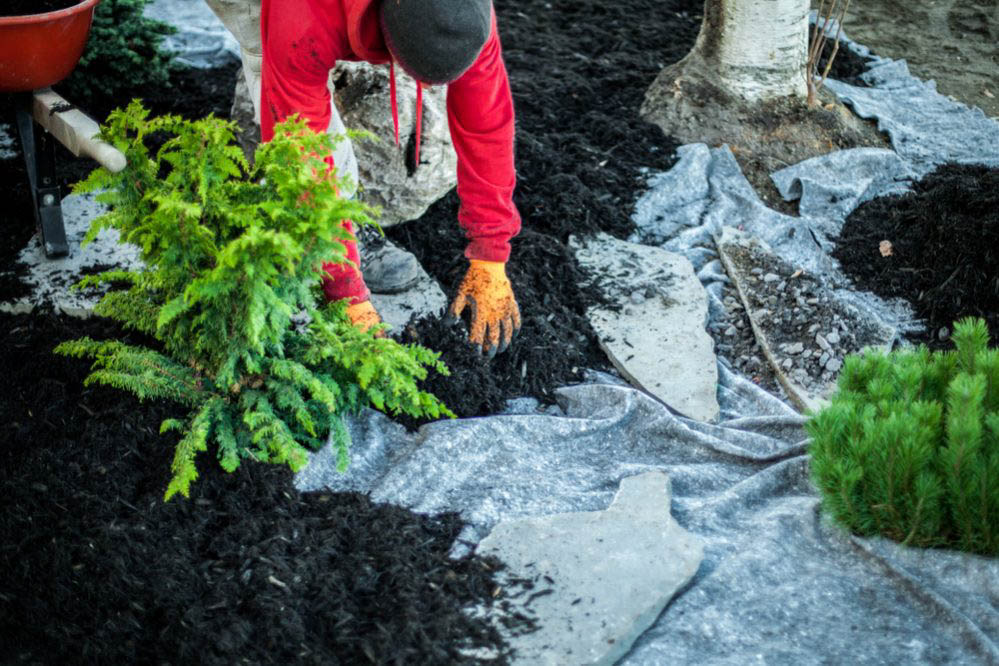Mulch
-
Mulch and Landscaping

Mulch Mulching errors while gardening can stop your soil from receiving benefits such as moisture preservation, weed suppression, erosion reduction, and water runoff reduction. Landscape architects and experts have given their best tips to make the most of your yard’s mulch.
Use it as a focus.
Mulching can help to create safe lawns but has an aesthetic appeal as well. Use painted mulch in the brick, stone, stucco, and siding to match your home’s exterior colors. Brownish to red pine mulch, for example, goes well with brick houses. You can contrast with flowers using a dark mulch to improve your landscape design. Mulch can also be used to improve the design and atmosphere of your landscape.
Look at the whole landscape.
Many homes have large mulch areas and a few shrubs around their yard poking about. It’s best to plan your landscapes so that all the soil is covered by your shrubs and the vegetative cover is complete. Then add mulch to them for moisture control.
Clean it up.
Replace some of the old mulch when you re-mulch a garden. Mulch has sometimes been applied three or four times to the gardens, and he suggests removing some of the mulch that has been built up over time.
Adjust the thickness.
When you hit an edge like asphalt, stepping stone, or tree trunk, thin it out. Finding a heap of mulch next to a tree trunk is no benefit. You do want to taper it downwards.

Tacoma Landscapings Experiment with a different mulch.
There are a variety of textures, beginning with choices like pine straw and hardwood bark shredded. If you’re looking for a new look and need to refresh your mulch, consider options like cocoa bean shells, nut hulls, ground-up salvaged palettes, and even seaweed.
Don’t forget the bare dirt.
Researchers find that mulching has significant environmental benefits. It will cause erosion and sediment runoff if you have bare soil on your property. Mulching may contribute to erosion control. Interestingly, bare soil loses about five times as much sediment as mulch-covered soils.
Don’t use too much mulch or too little.
For gardens, approximately 3 inches of mulch and mulching twice a year is recommended. Mulching with the right amount every time helps to fend off weeds and retain moisture, increasing the need for irrigation. If you are using pea gravel mulch or inorganic mulch, one exception. It’s just so easy. All you need is just 2 inches. If you have a bed of herbaceous plants that might be too small for 3 inches of mulch, another factor.
Don’t forget the trees you have.
To protect the trunk, place mulch around the base, particularly if you have younger trees. Mulch rings create a defensive area to keep mowers away and reduce risks from other crops.
Don’t believe you’re in need of something below.
Many people may want to use plastic or geotextiles, like landscape cloth, to distinguish many mulches from the ground like inorganic stone mulch. There is a misconception that black plastic is going to keep down weeds. But adding a plastic or landscape fabric layer can cause more water runoff and prevent a clean, streamlined look from your garden.
If you use a natural mulch like shredded hardwood bark to break down, stop landscape fabric because you want the mulch to be in contact with the soil to enhance it. Plastic or landscape fabric has the ability to stop water and rain from entering the soil, and may actually increase runoff. Weeds may also develop into the fabric of the landscape, she adds.
If the mulch moves around or is replaced, it could show through the plastic or landscape fabric. It looks hideous when you’re exposed under the mulch to plastic or landscape material.
Use Quality Mulch
The biggest pitfall is from an unreliable source getting your mulch. Mulch could be shipped with noxious weed seeds in it, for instance, because it was stored next to a weed field. You will end up paying for it in the long run.